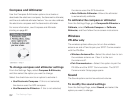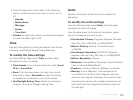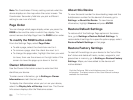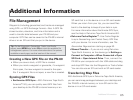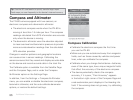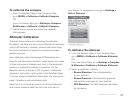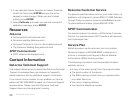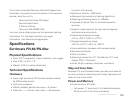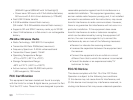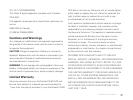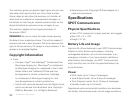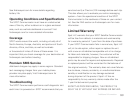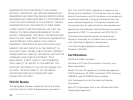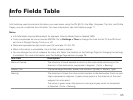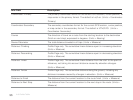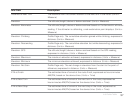90
[450mW typical (600mW with full backlight)]
» Power save: 30 hours with 2 AA alkaline batteries;
50 hours with 2 AA Lithium batteries [< 270mW]
Fast USB 2.0 data transfer
3.5 GB available internal ash memory
(SE model: 15.5 GB available internal ash memory)
Supports SD and SDHC memory cards; up to 32 GB
Uses 2 AA batteries or a DeLorme Li-on rechargeable
battery.
PN-60w Wireless Radio
Radio Technology: IEEE 802.15.4 compliant
Transmitter Bit Rate: 250kb/sec (maximum)
Frequency Spectrum: 2.4GHz unlicensed band
Transmitter Power (peak): 10mW
Operating Temperature Range:
-4ºF to +167ºF (-20 ºC to +75ºC)
Storage Temperature Range:
-49ºF to 212 ºF (-45ºC to +100ºC)
Active memory holds 20,000 track points:
1,500 waypoints; 100 routes
FCC Certi cation
This equipment has been tested and found to comply
with the limits for a class B digital device, pursuant to Part
15 of the FCC rules. These limits are designed to provide
reasonable protection against harmful interference in a
residential installation. This equipment generates, uses,
and can radiate radio frequency energy and, if not installed
and used in accordance with the instructions, may cause
harmful interference to radio communications. However,
there is no guarantee that interference will not occur in a
particular installation. If this equipment does cause
harmful interference to radio or television reception,
which can be determined by turning the equipment off
and on, the user is encouraged to try to correct the
interference by one or more of the following measures:
Reorient or relocate the receiving antenna.
Increase the separation between the equipment and
the receiver.
Connect the equipment into an outlet on a circuit
different from that to which the receiver is connected.
Consult the dealer or an experienced radio/TV
technician for help.
FCC/IC Notice
This device complies with Part 15 of the FCC Rules.
Operation is subject to the following two conditions:
(1) this device may not cause harmful interference, and
(2) this device must accept any interference received, in-
cluding interference that may cause undesired operation.
Additional Information



